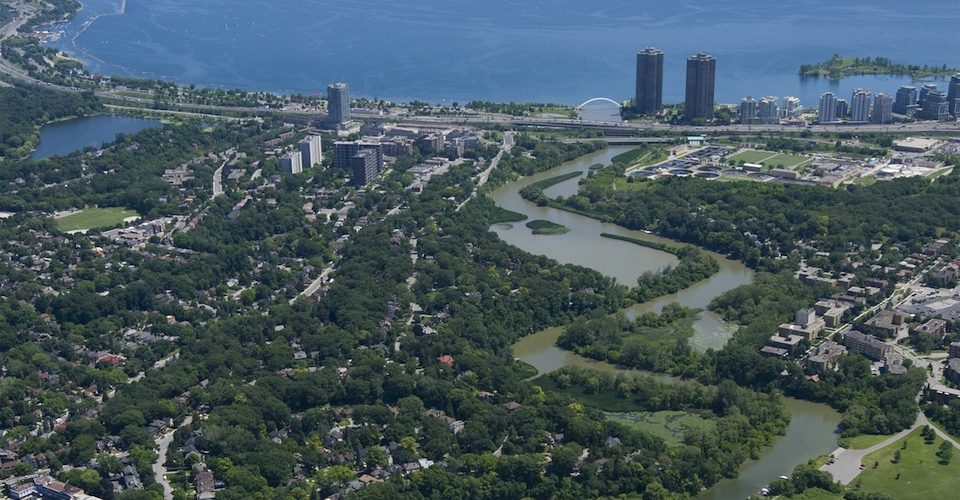It’s a new beginning for Ontario’s 1.8 million acre Greenbelt.
On January 10, Ontario Premier Dalton McGuinty was in Newmarket to announce a significant new designation to Greenbelt legislation, which will make it easier for municipalities to add public land to what is already the largest greenbelt in the world.
The new Urban River Valley designation will allow municipalities to retain flood protection controls over the urban rivers they intend to make part of the Greenbelt.
It’s a new beginning for Ontario’s 1.8 million acre Greenbelt.
On January 10, Ontario Premier Dalton McGuinty was in Newmarket to announce a significant new designation to Greenbelt legislation, which will make it easier for municipalities to add public land to what is already the largest greenbelt in the world.
The new Urban River Valley designation will allow municipalities to retain flood protection controls over the urban rivers they intend to make part of the Greenbelt.
Why is this significant? Burkhard Mausberg, CEO of Friends of the Greenbelt, explained it to me:
“What you find with urban rivers is that they are very complex systems. Designations under the current Greenbelt legislation say [municipalities] cannot build on their Greenbelt land, period, but that couldn’t be applied to urban rivers because they often need special flood protection provisions,” he said.
In Toronto, for example, after Hurricane Hazel dumped more than 11 inches of rain on the city in less than 48 hours, the city took action to provide greater flood protection in the Don and Humber river valleys. But under current legislation, once lands have been designated as part of the Greenbelt, no further development is possible, even when the purpose is to protect lives, habitats and property.
“The cities that voted for expanding the Greenbelt into their rivers – Toronto did, as well as Oakville and Mississauga – their planners realized that we cannot accept the current designation because then we can’t make adjustments to the flood protection provisions,” Mausberg said.
Weeks of public and stakeholder consultations announced in late November have concluded with the creation of the Urban River Valley designation, which will allow cities to cede river valleys to the Greenbelt while retaining the right to plan and construct flood protections.
“But you’re not allowed to build a condo or anything like that,” Mausberg said.
Ontario’s Greenbelt wraps around the southwestern tip of Lake Ontario from Niagara to Durham Region and north towards Beaverton on Lake Simcoe, with a thin, snaking strip of green running from Orangeville north to Owen Sound and up the Bruce Peninsula to Tobermory.
It protects an estimated $9 billion worth of prime agricultural and ecologically sensitive land while performing roughly $2.6 billion in air and water cleaning services annually.
The latest change to Greenbelt legislation also addresses an important and often overlooked factor – for all the efforts to protect water quality in the Great Lakes, less is done to protect the rivers that feed into those lakes.
“This goes back to what David Crombie said years ago with the Waterfront Regeneration Trust – there’s no sense in resolving what happens in the lake when we don’t resolve what happens on land and in the rivers that feed the water into the lake,” Mausberg said.
The Premier’s announcement also included details of the first expansion of the Greenbelt since its formation in 2005. More than 265 hectares of provincially owned lands in north Oakville – known as the Glenorchy Conservation Area in Halton Region – were officially added to the Greenbelt.
But as important as the addition of the Glenorchy lands is to the Greenbelt today, Mausberg is excited about the potential the new designation has for the future of the province’s protected green spaces.
“The new designation – it’s like the end of the NHL lockout. It’s a new beginning,” he said.
“It allows for something we haven’t been able to do before and allows us to continue our worldwide leadership on this issue. There is no other country in the world that has such a big and successful Greenbelt which means I get phone calls from people around the world asking what we are doing right here in Ontario. It’s phenomenal,” Mausberg said.
While the current public consultations on the amendments to the Greenbelt Plan ended January 4, with new regulations making it easier for municipalities to add lands to the Greenbelt, watch for more opportunities in the coming months to get involved in growing the Greenbelt in southern Ontario.
Want more on Greenbelts? Subscribe today to make sure you get the A\J Greenbelts issue in March!
The Current Events blog covers a wide array of environmental issues from across the country and around the world, from politics and public policy to energy, natural resources, and environmental science.
Andrew is a freelance environmental writer and reporter based in Toronto with a Masters in Geography from the University of Toronto. When he’s not writing he’s usually cycling around town, thinking about what to write next. Andrew’s posts appear weekly on Thursdays. You can read more of Andrew’s stuff at his own blog, The Reeves Report, or follow him on Twitter.
Andrew Reeves is the Editor-in-Chief of Alternatives Journal. Overrun, his book about Asian carp in North America, will be published in Spring 2019 by ECW Press. His work has also appeared in the Globe & Mail, Spacing and Corporate Knights. Follow him on Twitter.













